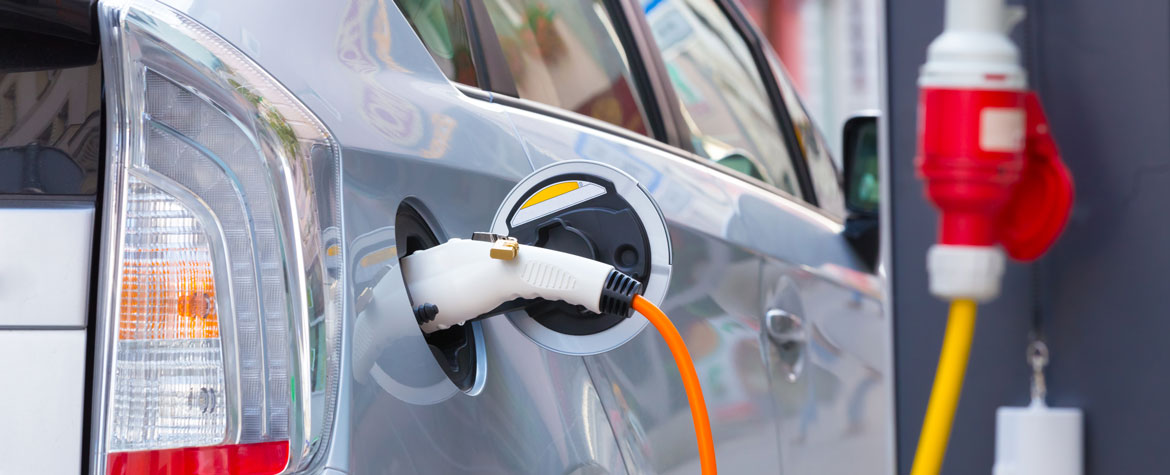
Electric vehicles: switched on
All you need to know about buying a second-hand EV, by Rachel Ellis.
Prices are dropping, driving ranges are increasing, and the public charging network is growing. Already, there are around 25 electric and plug-in hybrid models available in New Zealand and as the EV market matures, the deals on second-hand EV improve. So you’re in. You’ve decided a second-hand electric vehicle is the right choice for you. The next step is research.
Learn the difference
Battery Electric Vehicles run an electric motor with a battery you charge by plugging in. No fossil fuels, no emissions. The bigger the battery, the farther you can go before the juice runs out - and they’re getting better all the time. First-generation Nissan Leafs had a range of up to 130km on a single charge; the latest model has a range of up to 400km, depending on the size of the battery pack. High-end Tesla cars will keep you going for about 500kms. Electric Range-Extended Vehicles, like the BMW i3, have a plug-in battery, an electric motor, and a combustion engine. The tiny petrol engine generates electricity, it doesn’t drive the wheels, and will increase the range of the car by about 110km per charge. The Plug-in Hybrid Electric Vehicle, like the Mitsubishi Outlander PHEV, run on battery for short trips up to 50km, and then switch to a petrol engine when the battery runs out of power. There is no range anxiety with these but with two engines there is more that could go wrong. One of the bonuses of an electric engine is having only about 20 moving parts, as opposed to the 2000 of a petrol or diesel engine.
Charging ahead
Powering up an EV takes between 25 minutes and ten hours. Charging at home is simple; using a timer to charge after 11pm when electricity rates are lower is a good option. You can charge an EV through a standard three-point socket, a home charging unit, a caravan plug, or at the slow charge or DC fast-charge stations popping up on New Zealand’s electric highway. Charge.net.nz can show you where they are. At a rapid charge station, you can either top up or get a full charge, which takes around 25 minutes and costs about $10 per 100km; a similar cost to a conventional car. With limited fast charging stations capable of charging only a couple of cars an hour, you could end up waiting some time. EVs are well suited to short work commutes or daily trips. They use about 30% less battery capacity crawling along at 30kph in traffic, than doing the same distance at 100kph. On average, New Zealanders commute about 28kms per day, so a driving range of 100kms usually does the trick for a city car. If you’re going on a longer trip, plan when and where you will fast-charge, and enjoy a coffee. Maybe stay overnight in a B&B and slow charge - check out plugshare.co.nz. If range anxiety threatens to ruin the road trip, consider putting the accumulated fuel savings from your EV toward hiring a rental car.
Check before you buy
Batteries don't usually fail as they age, but they do lose capacity. An eight- to ten-year-old battery may only have about 75% of its capacity left. That could be an issue in a car that only had a 110km range when new, but for an EV with a range over 300km, that 75% capacity still leaves a great second vehicle for everyday running around. Check the state of the battery’s health. You can get a copy of a recent scan of the battery from most dealers, or check battery capacity on the dashboard. A new Leaf, for example, will have 12 battery bars showing on the dash: ten bars would mean the battery had about 75% charging capacity left. Check your plug type because plugs and connectors differ. One plug type might not be compatible with the connector at the station you want to charge up at – such as one near your work place. The solution: download the PlugShare app to see where you can plug in your EV and which public slow charging AC stations have sockets suited to your EV’s charging cable. Does your EV have a DC fast charge port? Not all EVs do and it might not matter to you, but you should know either way before you buy. A fast charge station converts AC power from the grid to the DC necessary for your battery. If your EV lacks a DC fast charge port, it will have an onboard charger that coverts the AC current to DC, but slowly. Onboard chargers vary from model to model. In a Leaf, for example, the onboard charger can be a 3.3KW or a 6.6KW. The basic difference is that the 6.6KW charges twice as quickly at a slow charge station or through a wall unit.
Test Drive
Find out how an EV performs on your commute, work out your charging options, power it up at home overnight to get a good picture of the battery health and then decide whether you’ll be as passionate as other EV owners are about their cars. Why not rent an EV for a few days, to see how it suits? And finally, used electric cars are still used cars, and you should follow all the normal steps before buying: get it inspected and get its history to ensure it has no outstanding finance or police interest.
Reported by Rachel Ellis for our AA Directions Autumn 2018 issue
